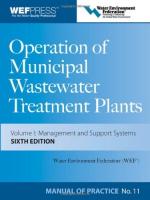|
This section contains 996 words (approx. 4 pages at 300 words per page) |

|
Wastewater often mixes with free-flowing water in rivers, streams, oceans, lakes, and other bodies of water. The addition of wastewater can radically alter the chemistry—and the ecological dynamics—of water bodies and hydrologic reservoirs. Wastewater includes the sewage-bearing water that is flushed down toilets as well as the water used to wash dishes and for bathing. Processing plants use water to wash raw material and in other stages of the wastewater treatment production process. The treatment of water that exits households, processing plants, and other institutions is a standard, even mandated, practice in many countries around the world. The purpose of the treatment is to remove compounds and microorganisms that could pollute the water to which the wastewater is discharged. Particularly with respect to microorganisms, the sewage entering a treatment plant contains extremely high numbers of bacteria, viruses, and protozoa that can cause disease if...
|
This section contains 996 words (approx. 4 pages at 300 words per page) |

|


